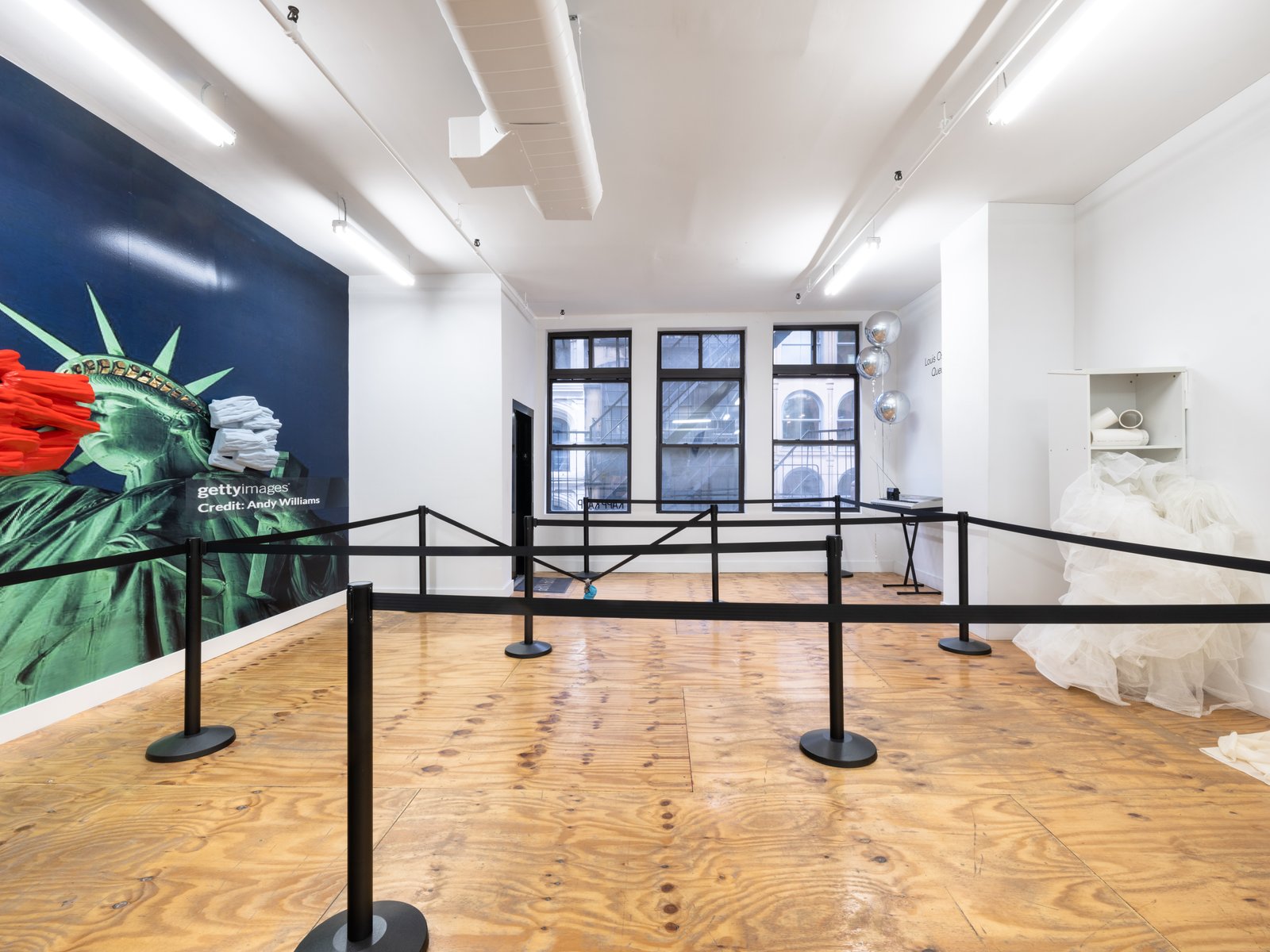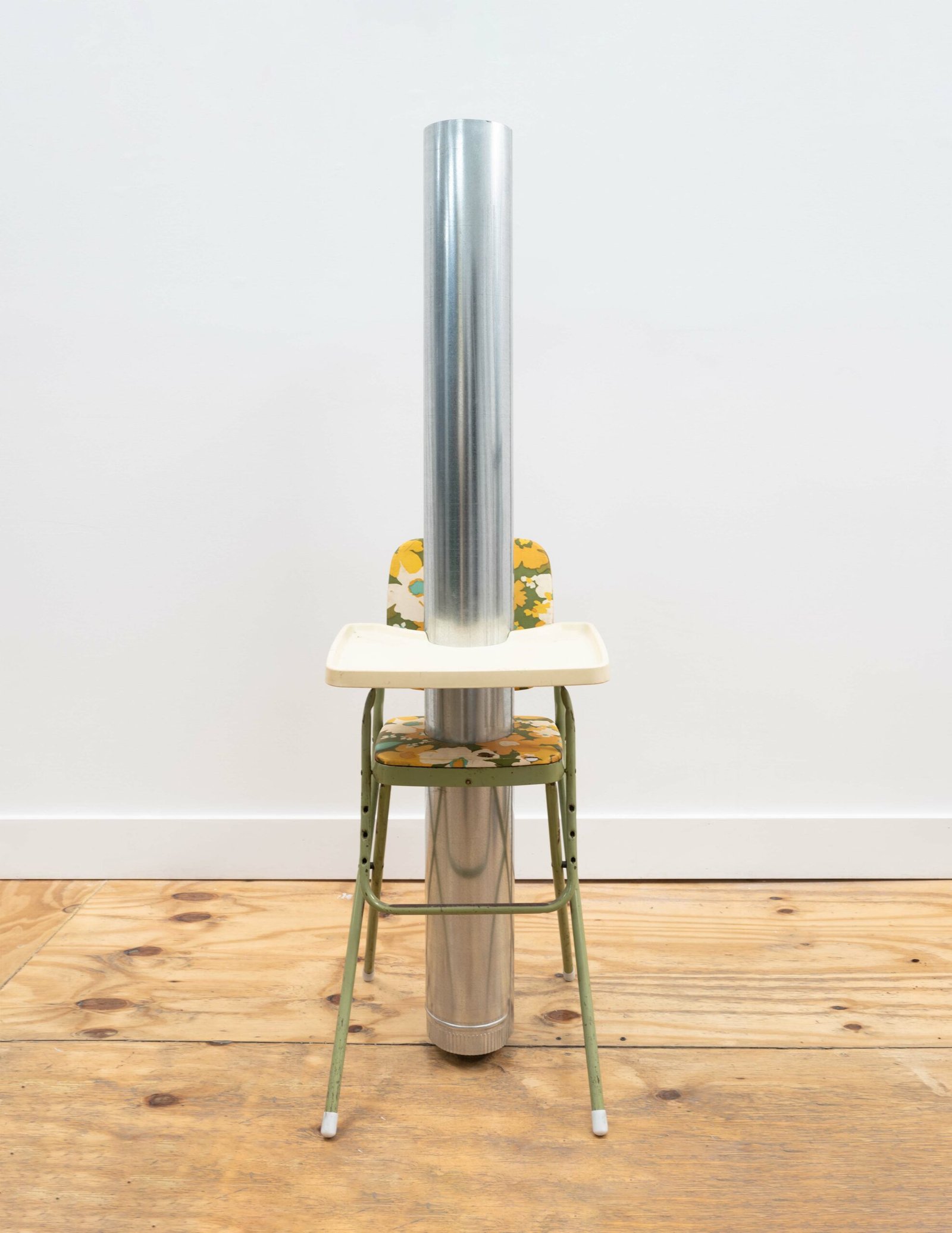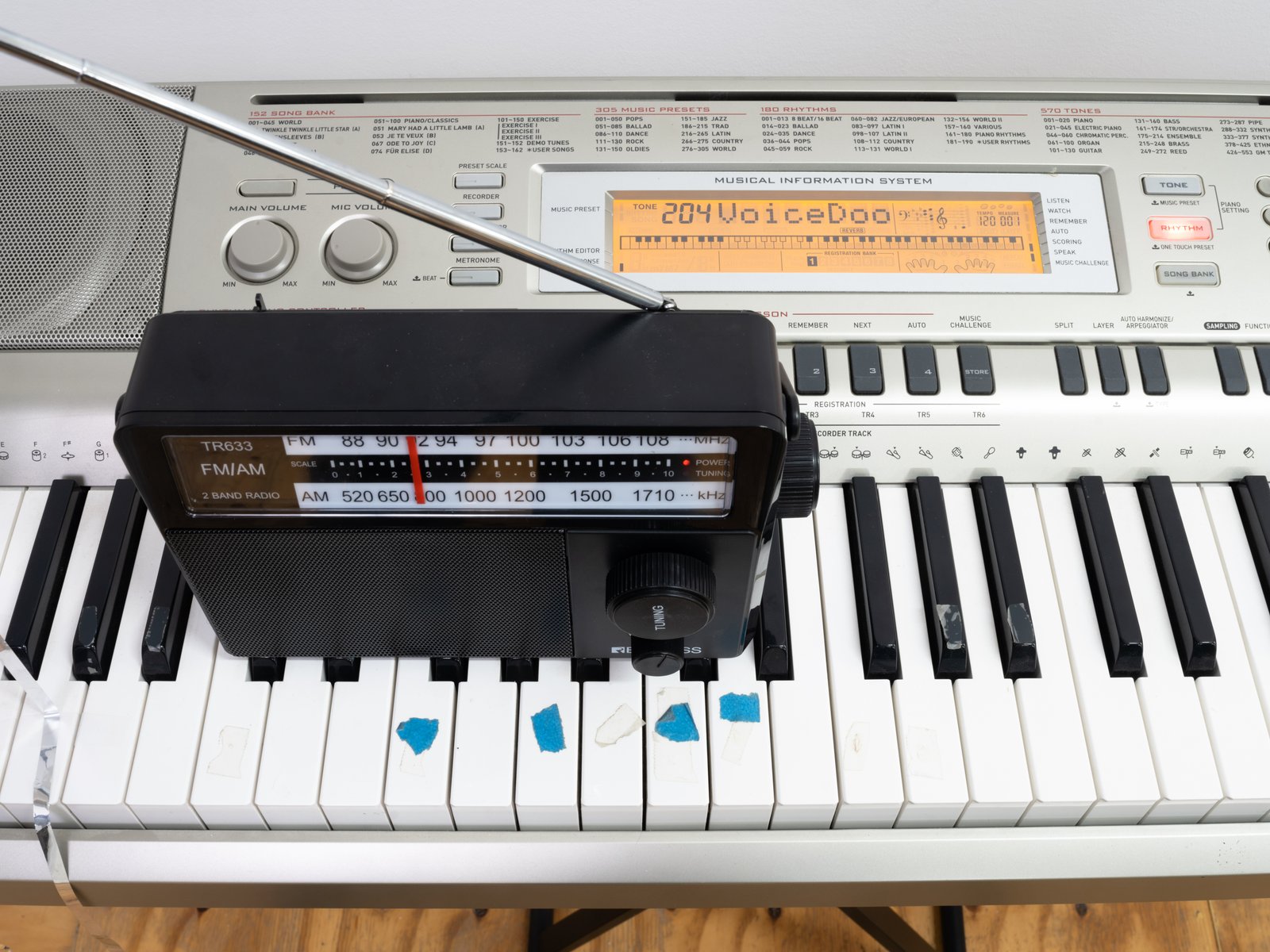Louis Osmosis is staging a social comedy
Louis Osmosis contextualizes each element by what is next to it, so as to make interpretation potentially endless
For Louis Osmosis (Brooklyn, 1996) the exhibition space is a labyrinth. But instead of Ariadne’s thread, stanchions with black belts, the same as in airports, hospitals, and government departments: bureaucracy, paperwork, and even art, line us up. “No one knows you better than you know yourself, no matter how exhausting it is for yourself to be in this position” gently proclaims Louis Osmosis, who conceives his second exhibition at Kapp Kapp, a gallery with two locations, in New York and Philadelphia, as a multimedia installation within an obligatory path. Beyond the mythological reference, the stanchions function on multiple metaphorical levels: mental entanglement, amusement park, social levelling, getting lost and being found. Cady Noland and Lutz Bacher, Simon Denny, and, above all, the work titled Stanchions (Barriers) by Puppies Puppies (Jade Kuriki-Olivo, here is the link to my writing about him), which in 2017, at T293 in Rome, recreated in the gallery the path that in an airport leads to baggage control. If for the latter the autobiographical dimension of psychological distress experienced by a transgender artist facing authorities prevailed, Queues, the exhibition at issue here, suggests a circuit as much spatial as mental in which objets trouvés, art history, TikTok and politics are caught. “This is also a strategy to give myself the role of a histrionic” the artist claims.

Louis Osmosis has indeed placed his works, all produced in 2024, along this route. They nod an eye to exponents of modernism, such as Brancusi and Henry Moore, as well as to the icons of the conceptual art wave. “I find the TSA’s gimmicks to communicate the list of illegal and banned items to those queuing in an airport interesting,” declares Louis Osmosis; “these are display cases containing confiscated objects or hyper-realist facsimiles. They fascinate me; they exist only to deny possession of the items they contain; the best way to indicate a prohibited item is to show a duplicate of it, that is, a kind of ready-made object.” Osmosis seems to escort the impromptu Theseus/spectator through a maze of discovery punctuated by progressive epiphanies: in fact, along the arduous itinerary, we encounter sculptures that are the protagonists of an American pastoral with an inner, two-way logic.
Why Osmosis? “I chose this name when I was 12 years old to keep my family from finding me on Facebook,” explains Louis, “Alton Brown later mentions it in Iron Chef as well, and I interpreted it as a sign.” Is there any connection to the scientific definition of the term extrapolated from the Oxford Dictionary, by any chance? “Although it originally had nothing to do with the lexical meaning, at the same time this fits with my work since on the one hand I tend to conceive of artists as receptacles of culture and on the other hand I find the image of a child in a lab coat engaging in his first laboratory experiments evocative. Without neglecting the hilarity that a scientific surname arouses in a text dealing with art.” That staged by Louis is a social comedy portrayed through the deployment of forces of appropriation in an attempt to show that, in today’s America and beyond, derivation is more original than copying a model. “Inheritance, conceptual or otherwise, is a notion for me to think about in relation to production,” he explains; “while it alludes to transmission, whether it’s genes or debt, it also explains my influences. I tend to think that artistic production is more generative when it is conceived as a repository.”
The ensemble, playful and unapologetic, is reminiscent of the childhood regressions and failures of the protagonist of Ari Aster’s film Beau is Afraid. And it is a comedy, by turns, funny. Funny in the Asterian sense. That is, we don’t have to really grasp the irony but we are invested by that feeling of estrangement that one gets from reading Kafka or watching a Lynch movie. Big Mascot and his offspring are a family of three-dimensional spermatozoa, differentiated from each other by bizarre headdresses, symbolic of a past that brings us together but also a hope in progress disguised as grotesque. Chair With Pipe represents childhood through a chair perforated vertically by a pole. Already from its title, the work pays homage to Robert Gober not without references to Walter de Maria’s violent Bel Air Trilogy, drawn-out Chevrolets crossed by steel cylinders. In the act of “weaponizing” everyday objects, Osmosis shows that he has absorbed the lessons of Eva Hesse and Mona Hatoum, discovering the other dimension of the domestic, its doppelganger.

If Smoking’ Tiki alludes to the 2017 Charlottesville riots captained by white supremacists in the form of a riot shield, Content House, for New York and Content House, for Los Angeles mutate from the language of Arte Povera and are presented as dioramas played out on the juxtaposition of salvaged materials and objects. They allude to the efforts made under one roof by a hypothetical generation of young entrepreneurs to create social content. But in the strides of a wedding dress bursting out of a locker, Osmosis hurls a dig at the advances and false illusions of a technology that mourns its triumphs, not unlike Pino Pascali’s 1960s push of modernism using straw, raffia and rope. Incubator seems to quote Plato’s Cave Myth and Duchamp’s cryptic and voyeuristic final chapter with Etant donnès, in a sort of self-prophecy revealing self-representation; instead, the pianola, little radio and polyester balloons of Score, for Ellipsis & Roundtable evoke the melancholy outcome of one, none and a hundred thousand garden parties of the typical perfect but dysfunctional American family.

About this sculpture, Osmosis cites William Pope.L and his 2013 exhibition at the Renaissance Society of Chicago, Forlesen, dotted with deflated balloons. Pope.L also reflected on the myopic obsession of those who see only the function of objects while neglecting their latent properties. “His work is a pillar for me,” Louis explains; “reading Holy Theory in college and then Canary in the Goal Mine helped formulate my method and provided a theoretical foundation. Pope.L was a master at over-loading the “thing” with metaphors (e.g., applying a mixture of joint compound and ketchup to a penis-shaped wall so that it would scale over time) while maintaining an ambivalence toward it. I am also attracted to sculptures displayed in shopping malls, airports, along boulevards, etc., that are vaguely reminiscent of modernist ones, to be reinterpreted as pastiches by the mechanized industry. I call them NPC (non-player-character) sculptures because their proliferation depends on inertia. These idiocies are what stimulate my work.”
Each element is contextualized by what is next to it in the perspective of an ever-expanding allegory, so as to make interpretation potentially endless. Louis Osmosis reveals his interest in technology, memory, staging strategies, the transmission of information and the ready-made by presenting himself as an epigone but also forerunner of those who will come after him, in a continuous circuit. Regarding the increasingly “hybrid” role of the artist, he says, “it’s sort of a moment of closing the circle, isn’t it? the role and employment of artists or, more precisely, of so-called cultural workers, in antiquity was in the service of the court, of the nation, to build and legitimize a shared cultural ideal. My hyperbeast brain always tends to ponder Da Vinci and Kanye. Terry Eagleton does an excellent job of outlining the current trajectory in the essay Where does culture come from? And I think this multifacetedness goes hand in hand with the industrialization and hegemony of information technology. The market now precedes artistic production and not vice versa; trends decide what people do. Thus, hybridization is a real sign of the times.”
But if communication systems impose an accelerated transmission of information, Louis Osmosis through the contrivance of tense tapes, not only demonstrates a direct descent from environmental artists but also seems to suggest the need for a thoughtful pause, a momentary suspension to the crazed hourglass of a hyper-connected, distracted and always in a hurry society.
July 11, 2024
